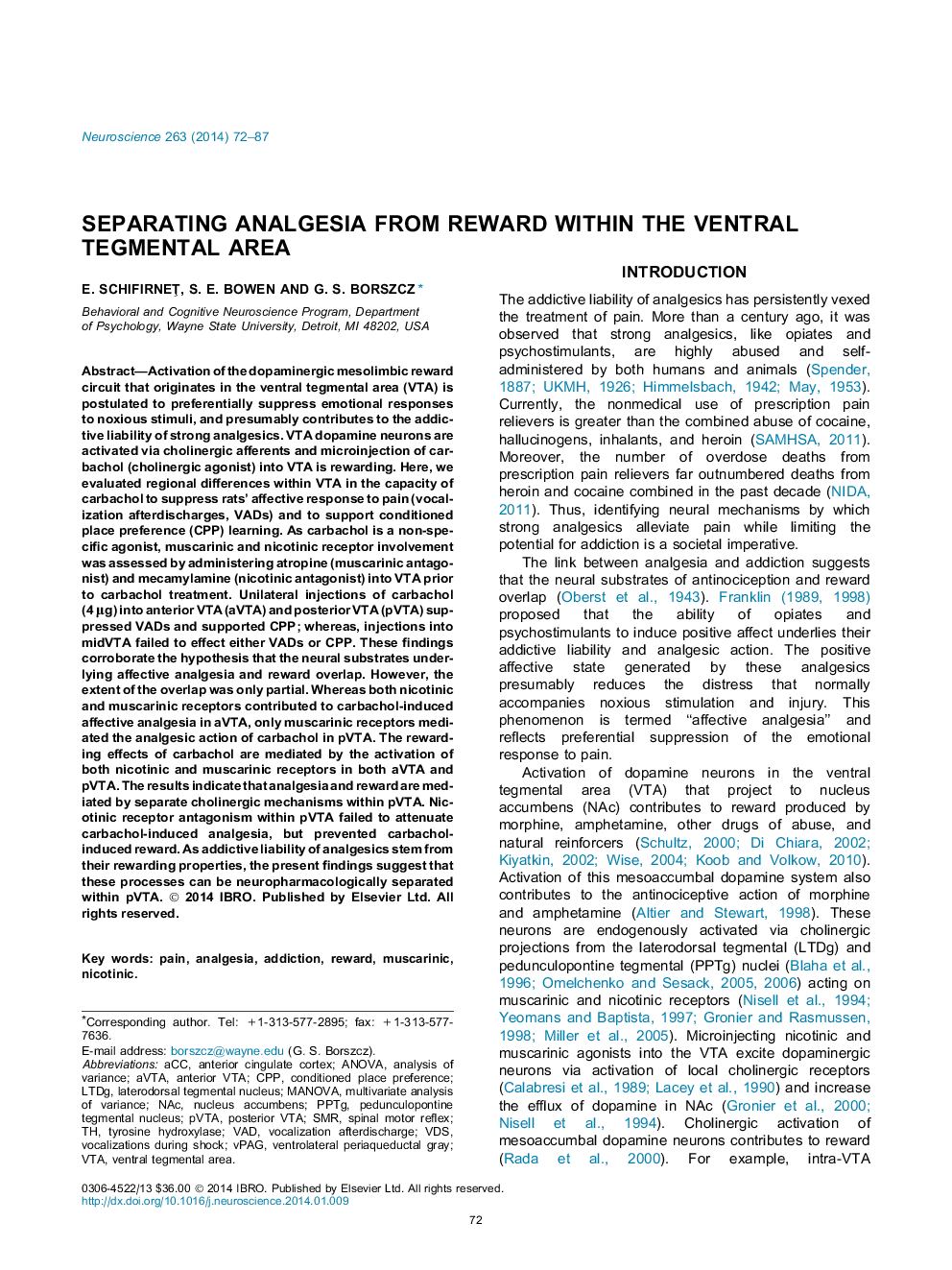| کد مقاله | کد نشریه | سال انتشار | مقاله انگلیسی | نسخه تمام متن |
|---|---|---|---|---|
| 4337755 | 1614813 | 2014 | 16 صفحه PDF | دانلود رایگان |
• Cholinergic activation of the ventral tegmental area (VTA) generates analgesia and reward.
• Analgesia and reward can be neuropharmacologically separated within the posterior VTA (pVTA).
• Nicotinic receptor antagonism within pVTA fails to attenuate analgesia, but prevents reward.
• A new subdivision of the VTA (midVTA) was identified.
• Cholinergic activation of the midVTA failed to support either analgesia or reward.
Activation of the dopaminergic mesolimbic reward circuit that originates in the ventral tegmental area (VTA) is postulated to preferentially suppress emotional responses to noxious stimuli, and presumably contributes to the addictive liability of strong analgesics. VTA dopamine neurons are activated via cholinergic afferents and microinjection of carbachol (cholinergic agonist) into VTA is rewarding. Here, we evaluated regional differences within VTA in the capacity of carbachol to suppress rats’ affective response to pain (vocalization afterdischarges, VADs) and to support conditioned place preference (CPP) learning. As carbachol is a non-specific agonist, muscarinic and nicotinic receptor involvement was assessed by administering atropine (muscarinic antagonist) and mecamylamine (nicotinic antagonist) into VTA prior to carbachol treatment. Unilateral injections of carbachol (4 μg) into anterior VTA (aVTA) and posterior VTA (pVTA) suppressed VADs and supported CPP; whereas, injections into midVTA failed to effect either VADs or CPP. These findings corroborate the hypothesis that the neural substrates underlying affective analgesia and reward overlap. However, the extent of the overlap was only partial. Whereas both nicotinic and muscarinic receptors contributed to carbachol-induced affective analgesia in aVTA, only muscarinic receptors mediated the analgesic action of carbachol in pVTA. The rewarding effects of carbachol are mediated by the activation of both nicotinic and muscarinic receptors in both aVTA and pVTA. The results indicate that analgesia and reward are mediated by separate cholinergic mechanisms within pVTA. Nicotinic receptor antagonism within pVTA failed to attenuate carbachol-induced analgesia, but prevented carbachol-induced reward. As addictive liability of analgesics stem from their rewarding properties, the present findings suggest that these processes can be neuropharmacologically separated within pVTA.
Journal: Neuroscience - Volume 263, 28 March 2014, Pages 72–87
